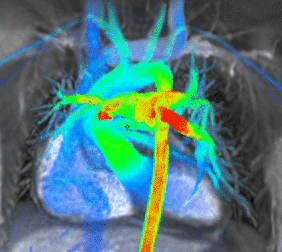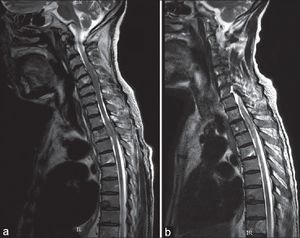Medical Imaging: Difference between revisions
No edit summary |
No edit summary |
||
| Line 9: | Line 9: | ||
* [[Ultrasound Scans|Ultrasound]] (US) | * [[Ultrasound Scans|Ultrasound]] (US) | ||
* [[CT Scans|Computed tomography]] (CT) | * [[CT Scans|Computed tomography]] (CT) | ||
* [[nuclear medicine]]: often cross-sectional radiotracer scanning e.g. PET is considered a separate modality from 'traditional' scintigraphy e.g. bone scans | * [[Nuclear Medicine|nuclear medicine]]: often cross-sectional radiotracer scanning e.g. PET is considered a separate modality from 'traditional' scintigraphy e.g. bone scans | ||
* Hybrid modalities<ref>Radiopedia [https://radiopaedia.org/articles/modality?lang=us Modalities] Available from:https://radiopaedia.org/articles/modality?lang=us (accessed 7.4.2021)</ref> | * Hybrid modalities<ref>Radiopedia [https://radiopaedia.org/articles/modality?lang=us Modalities] Available from:https://radiopaedia.org/articles/modality?lang=us (accessed 7.4.2021)</ref> | ||
[[File:CT spinal cord.jpg|right|frameless]] | [[File:CT spinal cord.jpg|right|frameless]] | ||
| Line 16: | Line 16: | ||
* <p align="justify"> It is important to know when imaging is appropriate, as unnecessary imaging will squander financial resources and increase potential for premature surgery. </p> | * <p align="justify"> It is important to know when imaging is appropriate, as unnecessary imaging will squander financial resources and increase potential for premature surgery. </p> | ||
{{#ev:youtube|https://www.youtube.com/watch?v=Dm9iaq8uMkI|width}}<ref>The Audiopedia What is Medical Imaging? What does Medical Imaging mean? Medical Imaging meaning & explanation Available from: https://www.youtube.com/watch?v=Dm9iaq8uMkI (last accessed 1.10.19)</ref> | {{#ev:youtube|https://www.youtube.com/watch?v=Dm9iaq8uMkI|width}}<ref>The Audiopedia What is Medical Imaging? What does Medical Imaging mean? Medical Imaging meaning & explanation Available from: https://www.youtube.com/watch?v=Dm9iaq8uMkI (last accessed 1.10.19)</ref> | ||
== Optoacoustic Imaging == | == Optoacoustic Imaging == | ||
<p align="justify"> | <p align="justify"> | ||
Revision as of 12:54, 7 April 2021
Overview[edit | edit source]
Medical imaging is home to all diagnostic and therapeutic investigations/interventions conducted in a typical radiology department. It encompasses different imaging modalities and processes to image the human body for diagnostic, treatment and follow up purposes and plays an important role in initiatives to improve public health for all population groups[1]. It includes:
X-rays (including eg plain xrays, DEXA scans, fluoroscopy)
- Ultrasound (US)
- Computed tomography (CT)
- nuclear medicine: often cross-sectional radiotracer scanning e.g. PET is considered a separate modality from 'traditional' scintigraphy e.g. bone scans
- Hybrid modalities[2]
Medical imaging, especially X-ray based examinations and ultrasonography, is crucial in a variety of medical setting and at all major levels of health care. In public health and preventive medicine as well as in both curative and palliative care, effective decisions depend on correct diagnoses. Though medical/clinical judgment may be sufficient prior to treatment of many conditions, the use of diagnostic imaging services is paramount in confirming, correctly assessing and documenting courses of many diseases as well as in assessing responses to treatment
Imaging is a useful resource for many conditions and is an invaluable tool for physical therapists when used appropriately.
It is important to know when imaging is appropriate, as unnecessary imaging will squander financial resources and increase potential for premature surgery.
Optoacoustic Imaging[edit | edit source]
Also known as Photoacoustic Imaging, is an upcoming biomedical imaging modality availing the benefits of optical resolution and acoustic depth of penetration. With its capacity to offer structural, functional, molecular and kinetic information making use of either endogenous contrast agents like hemoglobin, lipid, melanin and water or a variety of exogenous contrast agents or both, Optoacoustic imaging has demonstrated promising potential in a wide range of preclinical and clinical applications.[4]
Clinical applications of optoacoustic imaging include:[4]
- Breast imaging
- Dermatologic Imaging
- Pilosebaceous units
- Skin cancer
- Inflammatory skin diseases
- Vascular Imaging
- Cutaneous miscrovasculature
- Vascular Dysfunction
- Wound Imaging
- Carotid Vessel Imaging
- Musculoskeletal Imaging
- Gastrointestinal Imaging
- Adipose Tissue Imaging
Recent studies showed the potential use of optoacoustic imaging in the assessment, diagnosis and monitoring of treatment in patients with inflammatory arthritis[5] as well limb and muscle ischemia.[6]
Health Care Team[edit | edit source]
Imaging for medical purposes involves a team which includes the service of radiologists, radiographers (X-ray technologists), sonographers (ultrasound technologists), medical physicists, nurses, biomedical engineers, and other support staff working together to optimize the wellbeing of patients, one at a time. Appropriate use of medical imaging requires a multidisciplinary approach.[1]
Diagnostic Imaging for Body Regions[edit | edit source]
- Diagnostic Imaging of the Hip for the Physical Therapist
- Diagnostic Imaging of the Knee for the Physical Therapist
- Diagnostic Imaging of the Ankle and Foot for the Physical Therapist
- Diagnostic Imaging of the Shoulder
References[edit | edit source]
- ↑ 1.0 1.1 WHO Diagnostic Imaging Available from: https://www.who.int/diagnostic_imaging/en/(accessed 7.4.2021)
- ↑ Radiopedia Modalities Available from:https://radiopaedia.org/articles/modality?lang=us (accessed 7.4.2021)
- ↑ The Audiopedia What is Medical Imaging? What does Medical Imaging mean? Medical Imaging meaning & explanation Available from: https://www.youtube.com/watch?v=Dm9iaq8uMkI (last accessed 1.10.19)
- ↑ 4.0 4.1 Amalina Binte Ebrahim Attia, Ghayathri Balasundaram, Mohesh Moothanchery, U.S. Dinish, Renzhe Bi, Vasilis Ntziachristos, Malini Olivo, A review of clinical photoacoustic imaging: Current and future trends, Photoacoustics, Volume 16, 2019, 100144, ISSN 2213-5979, obtained from https://www.sciencedirect.com/science/article/pii/S2213597919300679 doi: 10.1016/j.pacs.2019.100144
- ↑ Jo J, Tian C, Xu G, et al. Photoacoustic tomography for human musculoskeletal imaging and inflammatory arthritis detection. Photoacoustics. 2018;12:82–89. Published 2018 Jul 27 obtained from https://www.ncbi.nlm.nih.gov/pmc/articles/PMC6306364/ doi:10.1016/j.pacs.2018.07.004
- ↑ Chen L, Ma H, Liu H, et al. Quantitative photoacoustic imaging for early detection of muscle ischemia injury. Am J Transl Res. 2017;9(5):2255–2265. Published 2017 May 15 obtained from https://www.ncbi.nlm.nih.gov/pmc/articles/PMC5446508/








